Cape Cod, Thoreau’s last book, begins with “Wishing to get a better view than I had yet had of the ocean…” and the final sentence concludes “A man may stand there and put all America behind him.” It was published posthumously in 1865, three years after his early death from tuberculosis at the age of 44 by Ticknor & Fields, a Boston publishing house. It was republished in 1908 by Thomas Y. Crowell & Co., with photos by their editor, Clifton Johnson, who followed Henry’s footsteps on the Cape to the best of his ability, and photographed suggestive scenes.1
As I was making plans to visit Cape Cod in mid-June, I started reading the book, and got an idea. In several of my earlier blog stories I have described following Thoreau’s footsteps, and this sounded like another good challenge: to go and see what had changed or stayed the same since his four trips to the Cape between 1849 and 1857.2
At the very beginning of Cape Cod, Thoreau describes how his first trip there went off plan because of a fierce October storm that prevented a straightforward boat shuttle across the bay from Boston to Provincetown, which then led to a visit to a grisly shipwreck at Cohasset, just south of Boston. In the in the view of later analysts, like his biographer Laura Dassow Walls, that macabre turn of events sets the stage, philosophically, for the book. She calls Cape Cod “Walden’s dark twin.”3 But another Thoreau scholar, Walter Harding, wrote that “’Cape Cod is Thoreau’s sunniest, happiest book. It bubbles over with jokes, puns, tall tales, and genial good humor … the model to which all new books about the Cape are still compared.’”4 Both perspectives are largely true; Thoreau’s various readers take different messages from his yin-yang writing and the unique and beautiful mind from which it sprang.
Clifton Johnson, the editor of the 1908 volume, notes in an introduction that Thoreau’s “report of his trip has a piquancy that is quite alluring. This might be said of all his books, for no matter what he wrote about, his comments were certain to be unusual; and it is as much or more for the revelations of his own tastes, thoughts, and idiosyncrasies that we read him as for the subject matter with which he deals.” Rebel that I am, that description of Thoreau’s style resonates with me. I love Johnson’s phrase “a piquancy that is quite alluring.” We wouldn’t hear those words that commonly now, but how apt they are; “piquancy” – a pleasantly sharp flavor (I think of picante, “spicy” in Spanish; and “allure,” from French, related to the English word “lure”; to tempt, fascinate, attract). Thoreau’s writing is sharp and fascinating.
Thoreau nicely used a metaphor to describe the geography he walked: “Cape Cod is the bared and bended arm of Massachusetts: the shoulder is at Buzzard’s Bay; the elbow, or crazy-bone, at Cape Mallebarre; the wrist at Truro; and the sandy fist at Provincetown.”
Johnson, in his introduction, introduces his own journey to follow Thoreau on the Cape:
“His book was the result of several journeys, but the only trip of which he tells us in detail was in October. That month, therefore, was the one I chose for my own visit to the Cape when I went to secure the series of pictures that illustrate this edition; for I wished to see the region as nearly as possible in the same guise that Thoreau describes it. From Sandwich, where his record of Cape experiences begins, and where the inner shore first takes a decided turn eastward, I followed much the same route he had travelled in 1849, clear to Provincetown, at the very tip of the hook.”
Me too, in June, 2023.
_______
Thoreau sets the stage for his presentation up front: “Wishing to get a better view than I had yet had of the ocean, which, we are told, covers more than two-thirds of the globe, but of which a man who lives a few miles inland may never see any trace, more than of another world, I made a visit to Cape Cod in October, 1849, another the succeeding June, and another to Truro in July, 1855.”
He made the first trip with his Concord friend, Ellery Channing. Exactly his age, Channing was a sort of lost-soul and itinerant Transcendentalist poet of the day, nephew of a famous Unitarian preacher. He sounds like a boon companion for Thoreau. In October of 1849, they went from Concord to the Boston docks to take the packet to Provincetown at the tip of the Cape, but they found service suspended because of the fierce storm. Hanging around and trying to figure out their backup plan, they saw headlines on local handbills announcing a dramatic wreck of an Irish famine ship at Cohasset, just down the bay. Something motivated them to take the train to Cohasset and check out the scene, and it is with that drama that Thoreau starts his book. In some significant way, also, it sets the tone of the entire book, which moves widely from detailed personal observations to deep philosophical themes. Beginning his book with the first images of the Cohasset shipwreck must have been deliberate, although maybe mainly because it followed Thoreau’s first-person, chronological, journalistic style.
The shipwreck may have resonated with Thoreau’s preoccupations at that phase of his life. He was wrestling with spiritual and philosophical issues, amid clear signals of his own mortality and questions about the future of the American political experiment. In 1846 he had been briefly jailed for a night for refusing to pay a poll tax used to fund the Mexican-American War. Only a few months before his first trip to the Cape, in May, 1849, his famous essay “Civil Disobedience,” was first published; it would later influence and inspire Gandhi, Martin Luther King, and Nelson Mandela.
Walden, his great classic, was published in the summer of 1854, to no great acclaim at the time. By the spring of 1855, Thoreau was terribly ill. For months he could hardly move or write. Walls, in her biography, hypothesizes that it was due to a flare up of tuberculosis. By summer Thoreau was feeling better, and apparently itching to see the ocean again. His companion from the first trip, Ellery Channing, agreed to go with him to the Cape again on the Fourth of July, 1855.
Henry was also feeling positive about his writing about Cape Cod at that point. Putnam’s Monthly Magazine of American Literature, Science and Art had agreed to serialize Thoreau’s book, based mostly on his first trip in 1849, in its monthly travel series. But just as he departed for this third trip to the Cape, he learned that the magazine’s editor had decided to cancel his contract after the third installment. Disheartened, Thoreau wrote in his journal: “It costs so much to publish, would it not be better for the author to put his manuscripts in a safe?” He and Channing went anyway.
At some point during his bout of illness in the mid-1850s, Henry grew a beard around his neck, so-called “Galway whiskers,” which were thought to warm the throat, and which, along with plenty of exercise in fresh air, were seen as a precaution against what was at that time a mysterious, wasting disease. In 1856 a Walden fan asked for a photo of the author, and sent Thoreau money for it. Apparently on a whim he obliged, sitting for the first of the only two photos ever taken of him, and sent the photo and the change to his admirer. Except for his formal dress, Henry must have looked much like this on both his 1855 and 1857 visits to the Cape.
On Cape Cod, Thoreau was thinking far beyond the quiet, introverted meditations of Walden, from the quiet pond in the woods to the storm-tossed ocean.
_______
Before going walking, I’d like to note two aspects of Thoreau’s writing in Cape Cod (and in his other work, of course) that resonate with me as a writer. First is his diverse cross-disciplinary curiosity. He writes about the landscape, ecology, history, people he meets, his personal observations and feelings, and philosophical and spiritual themes, all linked and merged in a chronological travelogue. Second is his style. Thoreau is the narrator, he inserts himself into the scene, stepping onstage and conversing with his audience. Maybe that is because he presented much of the material for his book first as lectures to live audiences. He’s not afraid to tell audiences or readers that when staying with the Wellfleet oysterman who fed him clams for dinner, he soon became sick and threw up, or what he had the next morning for breakfast. His biographer Laura Dassow Walls quotes a reviewer who described Thoreau’s authentic and unique voice and style: “He bewilders you in the mists of transcendentalism, delights you with brilliant imagery, shocks you by his apparent irreverence, and sets you in a roar by his sallies of wit.”
Ah, to emulate that style and voice! I share Thoreau’s eclectic interests, and am not afraid to write across the diverse spectrum of themes that current creative nonfiction encompasses. But perhaps it’s his style that gives me courage the most. One of the reviewers of my last book, The View from Cascade Head6, strongly objected to my insertion of personal details, however true, in the narrative. When I described watching whales while eating a lunch of smoked salmon on crackers, the reviewer commented “I don’t want to know what he had for lunch! The writer seems to put in everything he thinks about, with no discrimination.” The comment about “no discrimination” echoed against one of my fundamental arguments in my writing: that everything is linked, everything relates to everything else. That to me is ecological writing, and Thoreau was doing it, a century and three-quarters ago.
_______
Now let’s walk with Henry. First, setting the stage, his writing about the shipwreck in Cohasset. I didn’t go there, and there were no shipwrecks that I heard of during my trip, but here is some of what Thoreau sketched.
“The brig St. John, from Galway, Ireland, laden with emigrants, was wrecked on Sunday morning; it was now Tuesday morning, and the sea was still breaking violently on the rocks.”
“I saw many marble feet and matted heads as the cloths were raised, and one livid, swollen, and mangled body of a drowned girl,—who probably had intended to go out to service in some American family,—to which some rags still adhered, with a string, half concealed by the flesh, about its swollen neck; the coiled-up wreck of a human hulk, gashed by the rocks or fishes, so that the bone and muscle were exposed, but quite bloodless,—merely red and white,—with wide-open and staring eyes, yet lusterless, dead-lights; or like the cabin windows of a stranded vessel, filled with sand.”
“In the very midst of the crowd about this wreck, there were men with carts busily collecting the sea-weed which the storm had cast up, and conveying it beyond the reach of the tide, though they were often obliged to separate fragments of clothing from it, and they might at any moment have found a human body under it. Drown who might, they did not forget that this weed was a valuable manure. This shipwreck had not produced a visible vibration in the fabric of society.”
Is there a message for us here, in our preoccupation with economic endeavors to the near-exclusion of anything else?
“On the whole, it was not so impressive a scene as I might have expected. If I had found one body cast upon the beach in some lonely place, it would have affected me more. I sympathized rather with the winds and waves, as if to toss and mangle these poor human bodies was the order of the day. If this was the law of Nature, why waste any time in awe or pity? “
“Why care for these dead bodies? They really have no friends but the worms or fishes. Their owners were coming to the New World, as Columbus and the Pilgrims did,—they were within a mile of its shores; but, before they could reach it, they emigrated to a newer world than ever Columbus dreamed of, yet one of whose existence we believe that there is far more universal and convincing evidence—though it has not yet been discovered by science—than Columbus had of this.”
Thoreau seems to have been pondering the idea of death, the meaning of individual life, and perhaps casting it against the shores of the American religion he had grown up in—even, perhaps, against the openminded Unitarianism of Concord that rebelled against the tyranny of New England Pilgrim fundamentalist Christianity. There is no talk of an eternal life in heaven, or other such stuff, in Thoreau’s Cape Cod.
After Cohasset, Thoreau and Channing spent the night in Bridgewater, and the next morning took the railroad to the end of the line. “After spending the night in Bridgewater, and picking up a few arrow-heads there in the morning, we took the cars for Sandwich, where we arrived before noon. This was the terminus of the “Cape Cod Railroad,” though it is but the beginning of the Cape.” There, they crammed into crowded stage coach that labored eastward over the “heavy” sand roads to the “elbow” of the Cape for the rest of the day, and spent their second night of the trip in Orleans: “At length we stopped for the night at Higgins’s tavern, in Orleans, feeling very much as if we were on a sand-bar in the ocean, and not knowing whether we should see land or water ahead when the mist cleared away.”
The next morning, setting out across the “Plains of Nauset” for the coast, Thoreau wrote:
“Thursday, October 11th, it rained, as hard as ever; but we were determined to proceed on foot, nevertheless. Every landscape which is dreary enough has a certain beauty to my eyes, and in this instance its permanent qualities were enhanced by the weather. Everything indicated that we had reached a strange shore. The road was a mere lane, winding over bare swells of bleak and barren-looking land. … The barren aspect of the land would hardly be believed if described. We thus skirted the back-side of the towns, for we did not enter any village, till we got to Provincetown, under our umbrellas, rarely meeting anybody.”
Finally, they reached the beach.
“Having got down the bank, and as close to the water as we could, where the sand was the hardest, leaving the Nauset Lights behind us, we began to walk leisurely up the beach, in a northwest direction, towards Provincetown, which was about twenty-five miles distant, still sailing under our umbrellas with a strong aft wind, admiring in silence, as we walked, the great force of the ocean stream…”
“This sand-bank—the backbone of the Cape—rose directly from the beach to the height of a hundred feet or more above the ocean. It was with singular emotions that we first stood upon it and discovered what a place we had chosen to walk on. On our right, beneath us, was the beach of smooth and gently sloping sand, a dozen rods in width; next, the endless series of white breakers; further still, the light green water over the bar, which runs the whole length of the forearm of the Cape, and beyond this stretched the unwearied and illimitable ocean. On our left, extending back from the very edge of the bank, was a perfect desert of shining sand… For sixteen miles, commencing at the Nauset Lights, the bank held its height, though farther north it was not so level as here, but interrupted by slight hollows, and the patches of Beach-grass and Bayberry frequently crept into the sand to its edge.”
“There I had got the Cape under me, as much as if I were riding it bare-backed. It was not as on the map, or seen from the stagecoach; but there I found it all out of doors, huge and real, Cape Cod! As it cannot be represented on a map, color it as you will; the thing itself, than which there is nothing more like it, no truer picture or account; which you cannot go farther and see. I cannot remember what I thought before that it was.”
Like Thoreau I had no image of it before, as I walked in Henry’s footsteps, starting to get the Cape under my feet. As it cannot be represented on a map. The thing itself, huge and real, Cape Cod!
_______
As I passed Marconi Beach walking northward the relatively sparse crowd of beachgoers thinned. I noticed a tiny bird, alternately sprinting so fast I could hardly follow and then stopping stock still, just at the line of pebbles in the sand just now reached by the incoming tide. A gloss with my binoculars confirmed it: a piping plover (Charadrius melodus), which was listed as “threatened” under the Endangered Species Act in 1985.7 Thoreau wrote:
“But if I were required to name a sound the remembrance of which most perfectly revives the impression which the beach has made, it would be the dreary peep of the piping plover (Charadrius melodus) which haunts there. Their voices, too, are heard as a fugacious part in the dirge which is ever played along the shore for those mariners who have been lost in the deep since first it was created. But through all this dreariness we seemed to have a pure and unqualified strain of eternal melody, for always the same strain which is a dirge to one household is a morning song of rejoicing to another.”
I’d heard their calls along the beach already, but not had such a good view of the bird itself.8
In cooperation with the US Fish and Wildlife Service, which is charged with protecting ESA-listed species like the piping plover, the National Seashore is trying its best. Along the beaches I walked, large stretches of the upper beach were marked off with stakes supporting a line of white twine, and at intervals, signs announcing the upper beach closure during the piping plover nesting season. The plovers build nest on exposed sand in the upper dunes, their eggs and chicks protected by incredible camouflage from predators like gulls. But humans, and especially their dogs, can chase incubating parents off these nests and damage nests and chicks. As I walked peacefully north along the deserted stretch of beach from the Nauset Light, I was suddenly approached and passed by two ATVs zooming southward along the beach. Their drivers were wearing National Park Service uniforms, and I guessed maybe their mission was to monitor and patrol the piping plover habitat and that they were not just out joyriding. I thought of Henry, though, who would probably have had a heart attack at the sight of such aliens from another world.
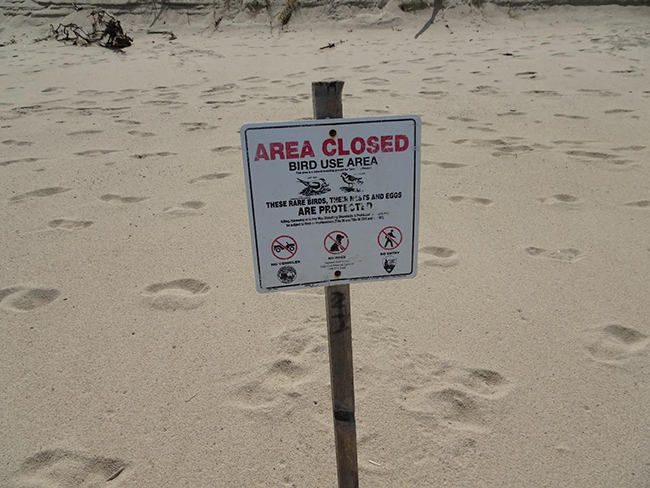
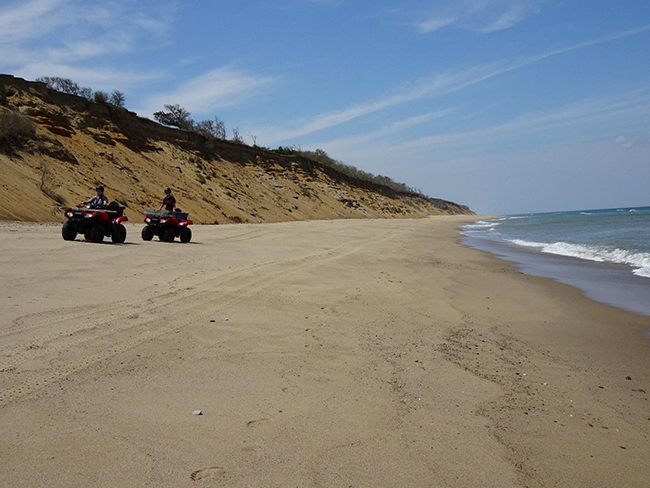
_______
Navigating northward from where they struck the coast at the Nauset Lights, across the flat, treeless Cape landscape that he described as “a perfect desert of shining sand,” Thoreau wrote:
“The most foreign and picturesque structures on the Cape, to an inlander, not excepting the salt-works, are the wind-mills,—gray-looking octagonal towers, with long timbers slanting to the ground in the rear, and there resting on a cart-wheel, by which their fans are turned round to face the wind. … Being on elevated ground, and high in themselves, they serve as landmarks, for there are no tall trees, or other objects commonly, which can be seen at a distance in the horizon. … Sailors making the land commonly steer either by the wind-mills or the meeting-houses. In the country, we are obliged to steer by the meeting-houses alone.”
Then, in the same paragraph, speaking of “meeting houses,” Thoreau can’t resist giving his jaded opinion of the organized religion of the day: “Yet the meeting-house is a kind of wind-mill, which runs one day in seven, turned either by the winds of doctrine or public opinion, or more rarely by the winds of Heaven, where another sort of grist is ground, of which, if it be not all bran or musty, if it be not plaster, we trust to make bread of life.”
_______
“Having walked about eight miles since we struck the beach, and passed the boundary between Wellfleet and Truro, a stone post in the sand,—for even this sand comes under the jurisdiction of one town or another,—we turned inland over barren hills and valleys, whither the sea, for some reason, did not follow us, and, tracing up a Hollow, discovered two or three sober-looking houses within half a mile, uncommonly near the eastern coast.”
It was that night they stayed with the “Wellfleet oysterman.” After getting sick from eating clams for dinner and still staying up late talking with the old oysterman, they slept through the windy night. “At breakfast we had eels, buttermilk cake, cold bread, green beans, doughnuts, and tea. The old man talked a steady stream; and when his wife told him he had better eat his breakfast, he said: ‘Don’t hurry me; I have lived too long to be hurried.’ ”
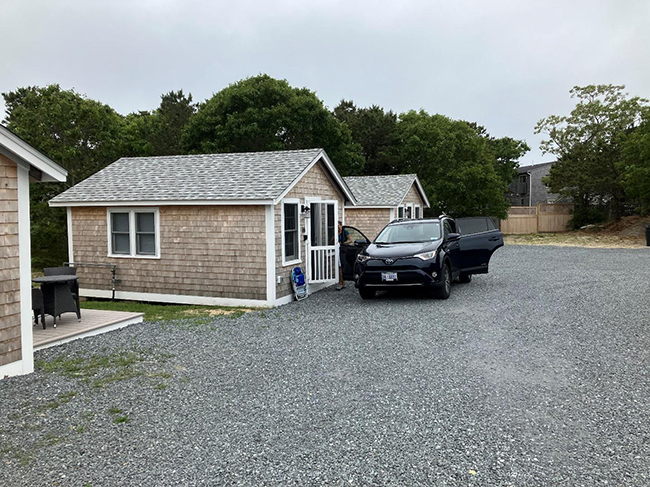
_______
From his first walk on the Cape, Thoreau also “steered” between main destinations on his walks not only by windmills and church steeples, but by lighthouses, which were placed on the highest ground and were also tall structures. From the Nauset Lights—three separate towers in Thoreau’s day—he and Channing made their way from the house of the Wellfleet oysterman to the Highland Light, where they stayed a night in the home of the lighthouse keeper, James Small, and helped him light the lamps in the light tower.
They went on to Provincetown the next day, where they stayed two nights in a hotel, waiting for a boat across the bay to Boston.
_______
From the time they arrived at the coast until their wanderings on the dunes north of Provincetown, Thoreau describes an anthropogenic Sahara:
“… this pure sand plateau… stretched away northward from the southern boundary of the town, without a particle of vegetation… In short, we were traversing a desert… and the country for the most part destitute of trees, a house was rarely visible,—we never saw one from the beach,—and the solitude was that of the ocean and the desert combined. A thousand men could not have seriously interrupted it, but would have been lost in the vastness of the scenery as their footsteps in the sand. …”
Thoreau was an astute ecological observer, as we know from his sophisticated researches around Concord. On the Cape, he describes both finding arrowheads and the barren and treeless landscape of his day, as well as incredibly impoverished agriculture: “It was such soil, or rather land, as, to judge from appearances, no farmer in the interior would think of cultivating, or even fencing. … It is sufficiently remarkable that any crops can be raised here … I never saw fields of such puny and unpromising looking corn as in this town.” He surely put two and two together, and wondered how Native Americans could have been hunting, growing crops, and making a living here. Walls describes how his trips to the Cape stimulated a series of twelve research notebooks, which he called his “Indian Books.” Over the years he “amassed nearly three thousand pages of information gleaned from hundreds of sources: explorers, settlers, missionaries, ethnographers, and Native American accounts and self-descriptions.”9 Had he lived longer, we probably would have another book by Thoreau about ecology and Native Americans in New England.
He was onto something. Native Americans had lived on the Cape for thousands of years. They lived in a woodland environment, although their use of fire to create open habitats and ecological “edges” (which supported and attracted the game they hunted) shifted the mix of tree species toward oaks and pitch pine, species more tolerant of dry soils and fires. When the Pilgrims landed near what is now Provincetown, they robbed Indian food caches of maize and beans. Their third “exploring expedition” away from their landing point ended in an exchange of arrows and gunfire; the Native inhabitants clearly wanted to chase the impolite, greedy strangers away… and, as they say, “the rest is history.” The Pilgrims crossed the bay and established the Plymouth Colony, and within two hundred years, European agricultural practices and disregard for ecological sustainability led to the sand desert Thoreau described.
Incredibly, slowly, it is healing now. The view from the Province Lands Visitor Center shows the pitch pine and oak woodland creeping back, and a walk on National Seashore trails to “Pilgrim Spring” took us through it.10
Fortunately, the ecological and cultural history of the Cape is now being told and corrected. The Highland House Museum11 has a new exhibit on the Mashpee Wampanoag, the Native American tribe that occupied the Cape. It was created by working with tribal activists who are intent on restoring their history and revitalizing their culture.12
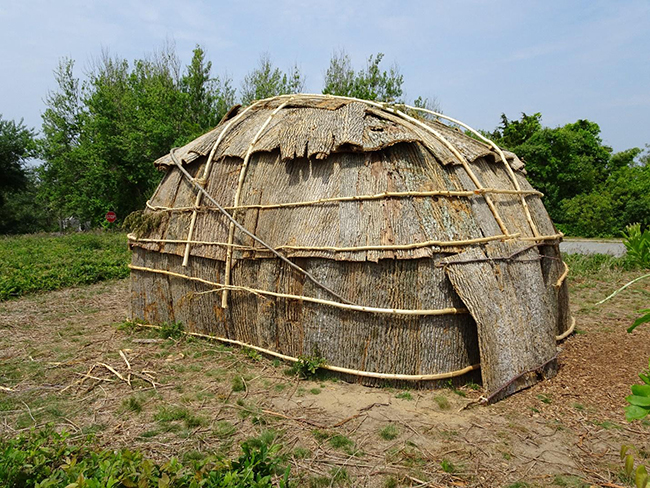
_______
Thoreau’s last sentence of the book is for me a philosophical coda to his stark opening. He ends saying he didn’t think that people of what he called the “fashionable world” would ever really like Cape Cod, because it didn’t have what he imagined his fellow citizens wanting, “a ten-pin alley, or a circular railway, or an ocean of mint-julep. … I trust that for a long time he will be disappointed here.” Disappointed, Thoreau implies, because nature, not humans, are in charge. Its beaches are “made and unmade in a day by the sea shifting its sands.”
And then he ends the book with his final thought about the Cape: “A man may stand there and put all America behind him.”
“Good riddance!” he seems to be saying. But his publishers probably got that message, and didn’t like it. They wouldn’t publish Cape Cod, despite Henry’s efforts to persuade them during his lifetime. I’m guessing that he really wasn’t surprised; an author might as well “put his manuscripts in a safe,” as to entrust them with publishers, he had written. Henry wrote for himself, to himself, but—thankfully—also for a future audience that appreciates his deep insights and independent voice.
Walking the Cape Cod outer beach, I tried my best to put all of the tortured history of America behind me, out of sight and out of mind, and send my imagination across the waves to the clean ocean horizon Thoreau apparently could visualize.
For related stories see:
Notes and Sources:
1 There’s a wonderful facsimile edition published by Thomas Y. Crowell & Co. in New York in 1908—long after Thoreau’s death—with photos by their editor, Clifton Johnson, who followed Henry’s footsteps on the Cape to the best of his ability, and took photos of suggestive scenes. It’s available to read for free online from Project Gutenberg: https://www.gutenberg.org/files/34392/34392-h/34392-h.htm
2 Sharon Talley, “Thoreau’s Journey to Cape Cod: A Psychohistorical Perspective,” Colby Quarterly 38, no. 4 (December 2002). https://digitalcommons.colby.edu/cgi/viewcontent.cgi?referer=&httpsredir=1&article=3386&context=cq Talley explains why there has been some confusion about whether Thoreau made three, or four, trips to the Cape. He made four, but his manuscript for Cape Cod was written before his last trip, in 1857.
3 Laura Dassow Walls, Thoreau: A Life (Chicago, IL: University of Chicago Press, 2017), page 405.
4 Walter Harding quoted at: https://web.archive.org/web/20080822133026/http://thoreau.eserver.org/capecd00.html
5 Photo from National Portrait Gallery, Washington, DC, with this captioning information: Portrait photograph taken 18 June 18, 1856, by Benjamin D. Maxham. Calvin R. Greene was a Thoreau “disciple” who lived in Rochester, Michigan, and who first began corresponding with Thoreau in January 1856. When Greene asked for a photographic image of the author, Thoreau initially replied: “You may rely on it that you have the best of me in my books, and that I am not worth seeing personally – the stuttering, blundering, clodhopper that I am.” Yet Greene repeated his request and sent money for the sitting. Thoreau must have kept this commitment to his fan in the back of his mind for the next several months. On June 18, 1856, during a trip to Worcester, Massachusetts, Henry Thoreau visited the Daguerrean Palace of Benjamin D. Maxham at 16 Harrington Corner and had three daguerreotypes taken for fifty cents each. He gave two of the prints to his Worcester friends and hosts, H.G.O. Blake and Theophilius Brown. The third he sent to Calvin Greene in Michigan. “While in Worcester this week I obtained the accompanying daguerreotype – which my friends think is pretty good – though better looking than I,” Thoreau wrote.
6 Bruce A. Byers, The View from Cascade Head: Lessons for the Biosphere from the Oregon Coast (Corvallis, OR: Oregon State University Press, 2020). https://www.osupress.oregonstate.edu/book/view-from-cascade-head
7 Piping Plover, https://www.fws.gov/species/piping-plover-charadrius-melodus
8 Piping Plover, American Bird Conservancy, vocalizations: https://abcbirds.org/bird/piping-plover/#:~:text=The%20Piping%20Plover’s%20calls%20include,pehp%2C%20pehp%E2%80%9D%20alarm%20calls
9 Walls, Thoreau: A Life, page 280.
10 Pilgrim Spring Trail, Cape Cod National Seashore, https://www.nps.gov/caco/planyourvisit/pilgrimspring.htm
11 Highland House Museum, https://trurohistoricalsociety.org/highlandhouse/
12 Abraham Storer, “Raising a Wetu in Truro,” The Provincetown Independent (June 7, 2023), https://provincetownindependent.org/top-stories/2023/06/07/raising-a-wetu-in-truro/

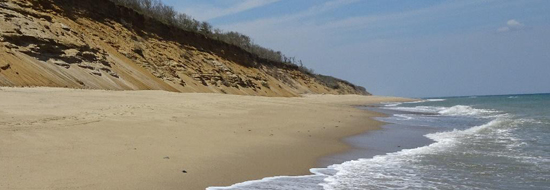
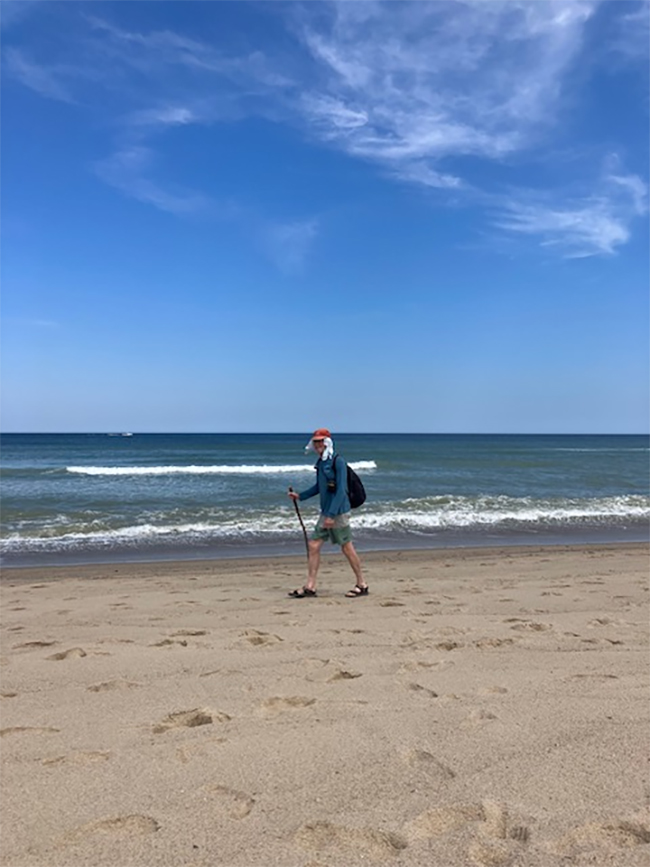
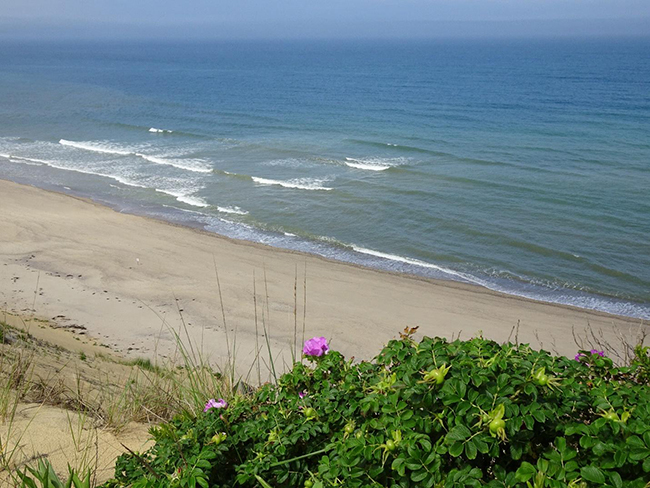
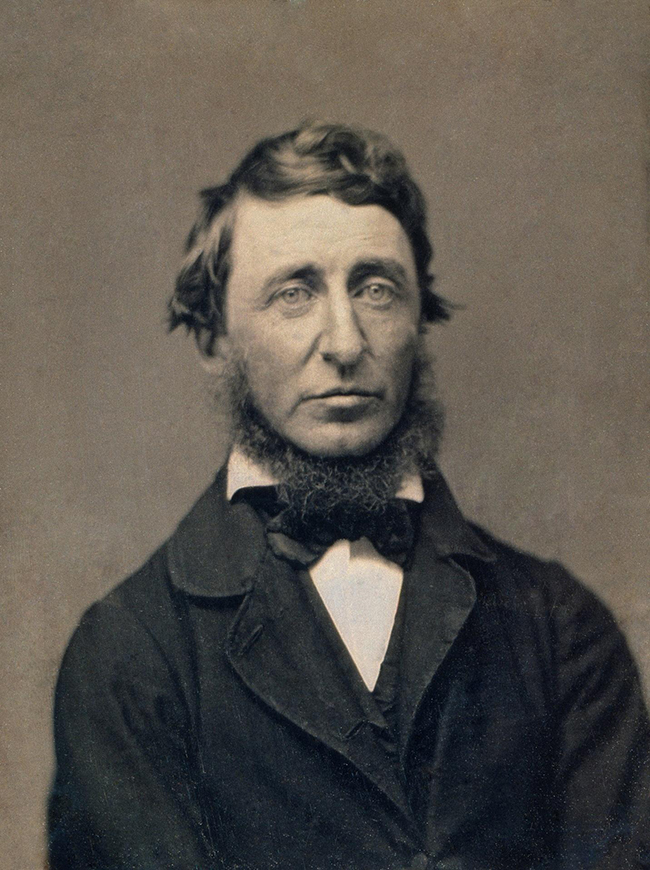
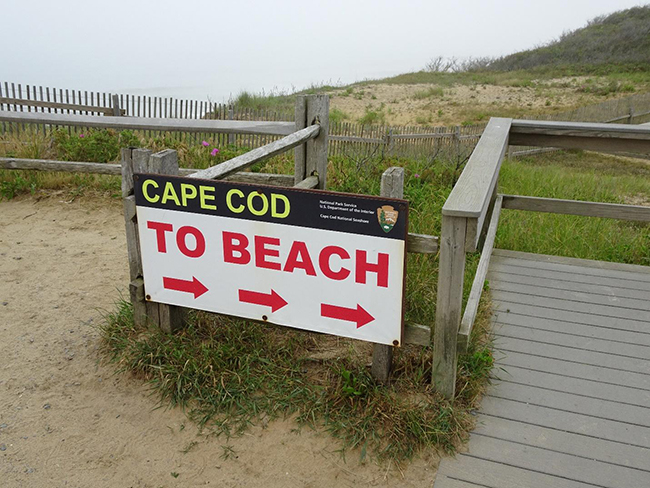
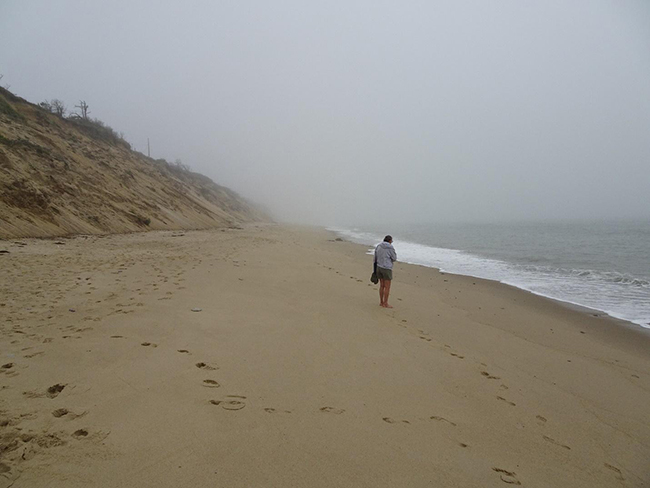
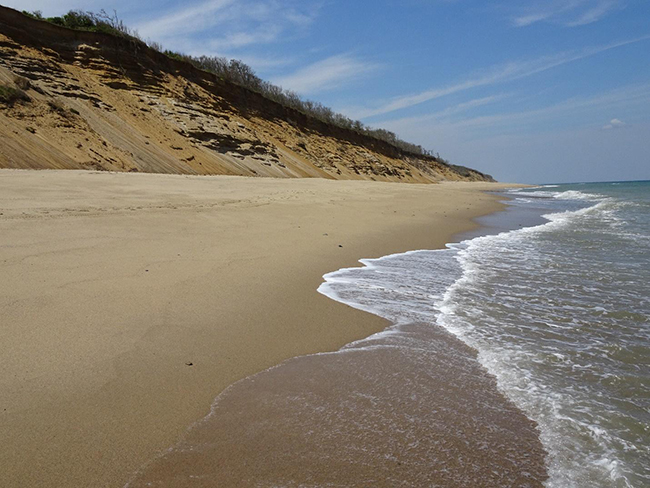
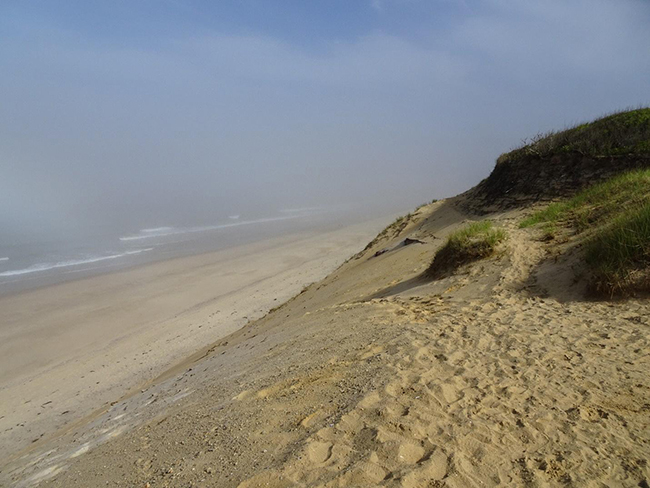
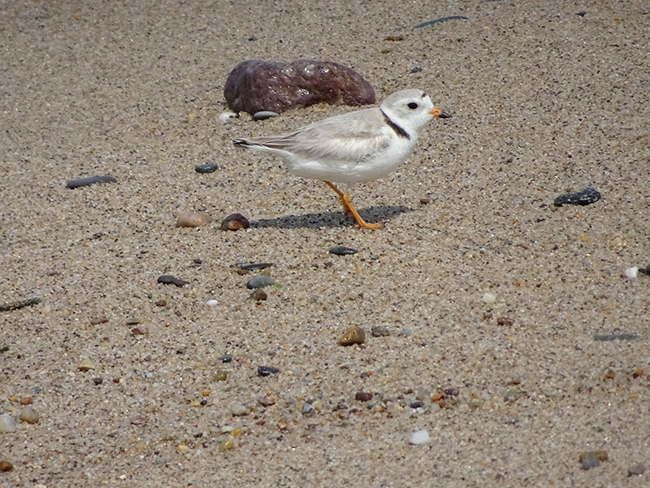
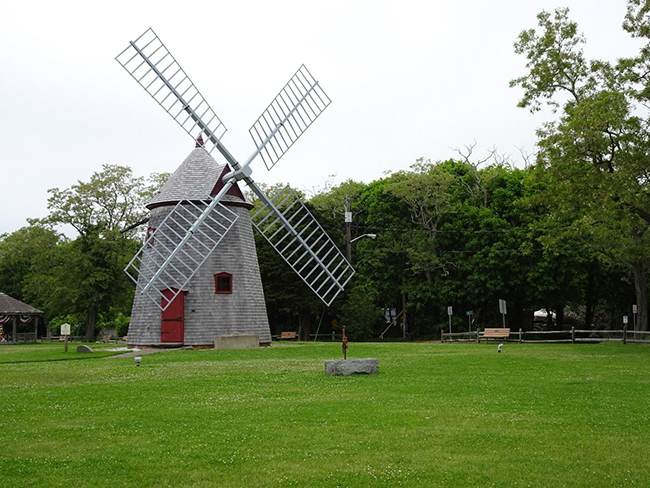
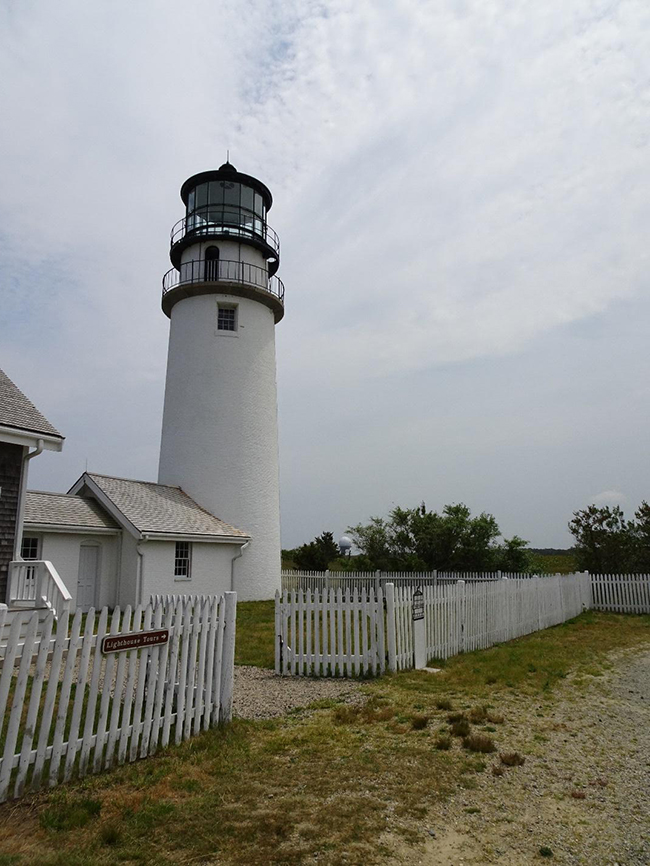
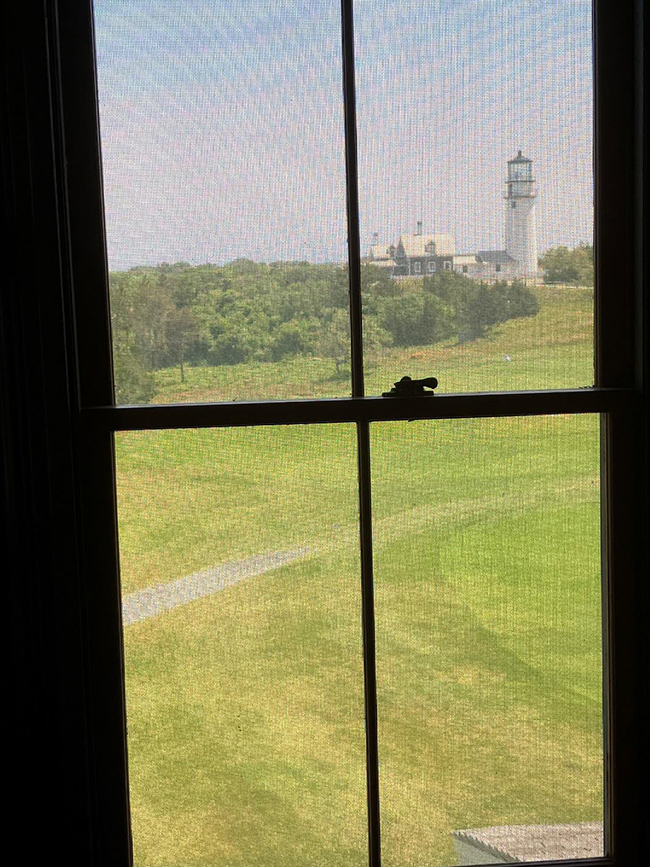
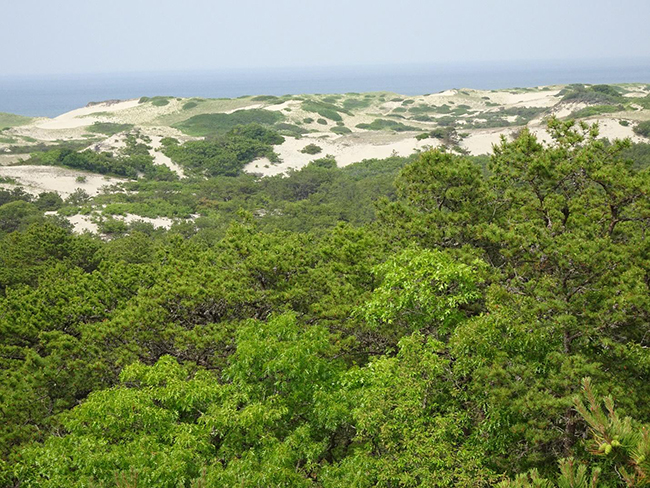
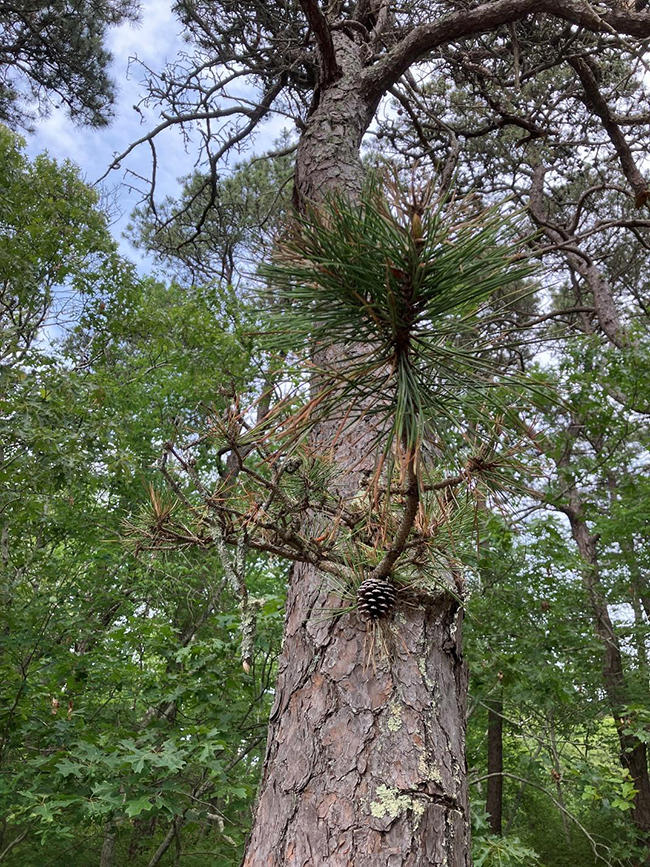
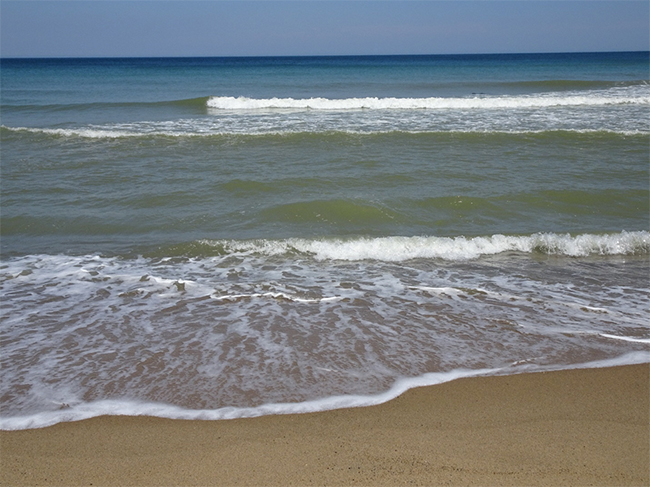



July 13, 2023 1:32 pm
Welcome back and glad your book project is moving forward. Enjoyed this blog tremendously. Look forward to seeing many more postings.
July 13, 2023 4:32 pm
Bruce – so fun to see this in my inbox today! We just returned from quick trip to Cape Cod and as part of my preparation and return I read Thoreau’s Cape Cod as well as “The Outermost Beach” by Henry Beston and “The Great Beach” by John Hay, two additional nature classics from the Cape. I’m adding your essay to my essential reading!
December 28, 2023 7:11 pm
Hi Bruce, I finally got around to reading this blog, and I thoroughly enjoyed it. Thank you. I almost felt like I was walking those beaches with you. My wife Martie and I have spent around ten summer vacations in Wellfleet, most of them with our children from 15 to 23 years ago, and the last in the summer of 2022. We generally explored the Cape from Wellfleet (spending a lot of time on the Wellfleet town beaches on the ocean side and ending most days with a soothing dive into the fresh water of one of the “kettle” ponds) northward to Provincetown, where we always bicycle through the dunes from Race Point to Herring Cove and back. Some of the coldest swimming water I’ve experienced is there. Since our vacations became childless, we’ve returned to the mid-Coast of Maine, from Bath to Belfast, where sand beaches are fewer as you go north, but the scene is less hectic and less crowded than the Cape and southern Maine. You would enjoy the short Morse Mountain to Seawall Beach hike, the only way for a common person to get to Seawall Beach, which is vast and usually almost people-less. I hope you are well! – Ed